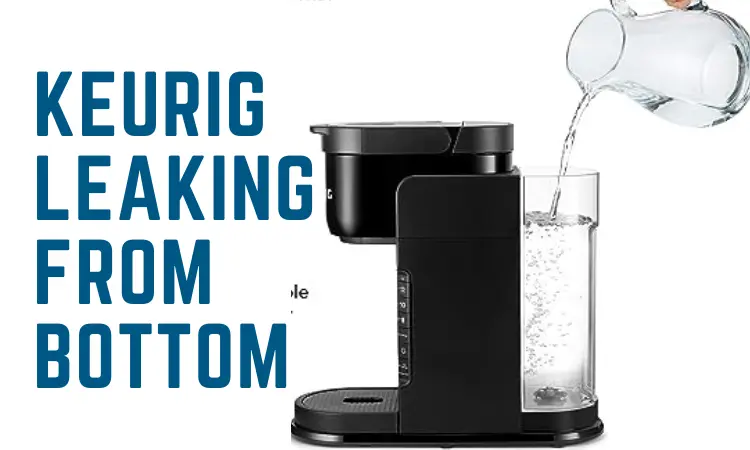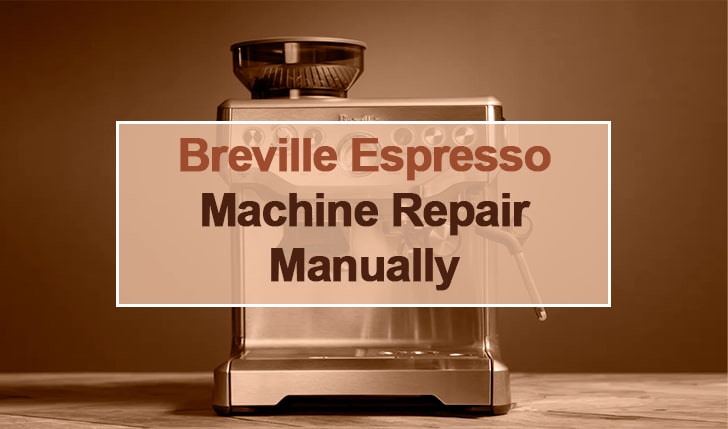Why Are Espresso Machines So Expensive?
Our site includes affiliate links, which may result in us earning an affiliate commission.
If you’re like most people, the words “espresso machine” probably conjure up images of expensive, high-end machines that are out of reach for the average person. But what if I told you that there is a world of espresso machines beyond those pricey models? This post will explore why espresso machines can be so expensive and show you some affordable options that still deliver great coffee.
Why are espresso machines so expensive? Here are the reasons:
- An espresso machine is expensive because it comes with many small parts that need to be calibrated and work in unison to produce a good cup of espresso.
- Quality espresso machines are built to last for many years which makes them costly.
- Since making a great cup of espresso is an art form, many people are willing to pay more for a high-quality machine that will help them make the perfect cup every time.
So whether you’re a home coffee maker or a barista looking to upgrade your equipment, read on for some tips on choosing an espresso machine that’s right for you.
What Is An Espresso Machine?
An espresso machine is a device in which water is heated to a high temperature and pushed towards the beans at pressure, which extracts the oils and flavors from the beans and creates a thick, concentrated espresso coffee. Espresso machines come in many different sizes and styles, but all espresso machines share the same basic principles and mechanics.
Checkout Our Recommended Best Inexpensive Espresso Machines For You [Under $100]
- Best Overall: Mr. Coffee Automatic Dual Shot Espresso/Cappuccino System
- Best for Beginners: Capresso 117.05 Stainless Steel Pump Espresso and Cappuccino Machine
- Best Stovetop: Bialetti Express Moka Pot
- Best Personal: BELLA (13683) Personal Espresso Maker with Steam Wand
- Best Portable: Wacaco Nanopresso Portable Espresso Maker
Why Are Espresso Machines So Expensive?

Here are the 10 reasons why are espresso machines so expensive.
- Quality
- Brand reputation
- Parts and materials
- Digital Display
- Pressure Consistency and Profiling
- Complex System
- Investment in durability
- Brewing Temperature Adjustment
- Human resources
- Extra features
Quality
An espresso machine is a lifetime investment. You want to make sure that the device you choose is made with quality materials that will last. Plus to make espresso at home, quality is what you will prefer more. That’s why quality manufacturing affects the price that cost you more.
Brand Reputation
Companies make espresso machines with a good reputation. If their devices don’t meet customer expectations, these companies have a lot to lose. To maintain the brand reputation they sell costly but with quality.
Parts and Materials
The best espresso machines are made with high-quality parts and materials. This includes stainless steel boilers, brass portafilters, and ceramic burr grinders. These materials add to the overall cost of the machine, but they also make it a better investment.
Digital Display
Many espresso machines come with a digital display. This feature allows you to see water temperature, pump pressure, and flow rate. The digital manufacturing of espresso machines is also a reason behind their hefty prices. My choice for easy to understand digital screen espresso machine is Breville Barista Pro which has a unique style and displays the grinding process with animation. Plus it also provides other information on the screen.
Pressure Consistency and Profiling
Espresso is all about pressure. The best espresso machines have consistent pressure throughout the entire brewing process. They also allow you to profile the pressure to get the perfect shot every time.
Complex System
An espresso machine is a complex system of moving parts. This complexity adds to the cost of the machine, but it also makes it a better investment.
Investment in Durability
The best espresso machines are built to last. They are made with quality materials and take more time in manufacturing. Also, the material is durable and costs more to the brands. This durability comes at a cost, but it is worth it in the long run.
Brewing Temperature Adjustment
The brewing temperature is one of the most critical factors in making a great espresso. The best espresso machines allow you to adjust the brewing temperature to get the perfect shot every time.
Human Resources
There are teams working behind manufacturing a single product. This workforce adds to the overall cost of the machine.
Extra features
Some espresso machines come with extra features that add to the cost, convenience, and quality of the machine. These features include automatic milk frothers, grinders, and water filters.
What Are The Different Types Of Espresso Machines?

Espresso machines come in various shapes, sizes, and styles. Each type of machine has its own set of features and benefits. The most commonly used types are:
- Piston-Driven
- Pump-Driven
- Semi-Automatic
- Automatic
- Super Automatic
Piston-Driven Espresso Machine
Piston-driven espresso machines are the oldest type of machine. They use a piston to pump water through the coffee grounds. The pressure from the piston creates a rich and flavorful espresso. These machines are very durable, but they can be challenging to use.
Pump-Driven Espresso Machine
Pump-driven espresso machines use a pump pressure to make espresso coffee. These machines are easy to use and produce rich and flavorful espresso.
Semi-Automatic Espresso Machine
Semi-automatic espresso machines allow you to control the amount of water and pressure used to make each shot. These machines need human involvement to work with as they are not fully automatic.
Automatic Espresso Machine
Automatic espresso machines automatically regulate the amount of water and pressure used to make each shot. This takes the guesswork out of making espresso.
Super Automatic Espresso Machine
Super-automatic espresso machines are built with the latest technology features and they do not require human interaction to make espresso. Just set the schedule, and they will make espresso at the given time. In addition, super-automatic espresso machines do not require cleaning. Because they have auto cleaning, milk frothing, etc. These machines are very convenient, but they can be pretty expensive.
My top choices for super-automatic espresso machines are:
- De’Longhi ESAM3300 Magnifica Super Automatic Espresso (under $800)
- Breville Barista Express Espresso Machine (under $600 + Best Seller in Super-automatic Espresso Machines)
What Are The Cheap Alternatives To Espresso Machines?

There are several ways to make a delicious cup of espresso without spending a fortune on an espresso machine. The first alternative is a stovetop espresso maker. These makers typically cost much less than traditional espresso machines, and they can produce a rich, flavorful cup of espresso.
Check out this stovetop espresso maker for under $50: Bialetti – Iconic Stovetop Espresso Maker
Another option is a manual espresso maker. These machines require more work than stovetop models, but they can also produce excellent results.
Finally, some coffee enthusiasts believe that a simple drip coffee maker is the best way to make espresso. Using a high-quality coffee grinder and carefully controlling the brewing process makes it possible to produce a flavorful cup of espresso with a drip coffee maker. While this method may not be as convenient as using an espresso machine, it can be a great way to save money.
Checkout Our Recommended Best Inexpensive Espresso Machines For You [Under $100]
- Best Overall: Mr. Coffee Automatic Dual Shot Espresso/Cappuccino System
- Best for Beginners: Capresso 117.05 Stainless Steel Pump Espresso and Cappuccino Machine
- Best Stovetop: Bialetti Express Moka Pot
- Best Personal: BELLA (13683) Personal Espresso Maker with Steam Wand
- Best Portable: Wacaco Nanopresso Portable Espresso Maker
What Makes Espresso Machine Expensive? Cheap Vs. Expensive
When it comes to espresso machines, there are two main types: expensive and cheap. There are pros and cons to both, so it depends on your needs and budget.
Cheap Espresso Machine
Cheap espresso machines tend to be more compact and easier to use than their expensive counterparts. They also don’t require as much maintenance and can be an excellent option for those just starting with making espresso at home.
However, cheap espresso machines often don’t have all the features and bells and whistles that more expensive ones do. They also may not make as good of espresso, so it depends on your personal preferences.
Expensive Espresso Machine
If you’re looking for an espresso machine with all the bells and whistles, you’ll want to go with an expensive one. If you’re starting, a cheap machine may be a great option. But if you’re looking for the best possible espresso, you’ll want to save up and go with an expensive machine.
Frequently Asked Questions (FAQs)
Why are commercial espresso machines so expensive?
Commercial espresso machines are expensive because they are built to last and deliver a quality cup of coffee every time. They have precision heating elements, durable construction, and powerful motors that help create the perfect crema on top of each cup.
Further, there are four main reasons commercial espresso machines are so expensive.
- Commercial espresso machines are built to withstand heavy use.
- They have to be able to produce dozens of shots of espresso per hour, day in and day out. This requires high-quality parts and construction that can handle the abuse.
- Commercial machines need to be precise and consistent in their output. This is especially important for cafes, where customers expect the same great cup of espresso every time they visit. A cheap machine that cannot produce consistent results will quickly lose business.
- Finally, many commercial espresso machines have added milk-steaming capabilities or built-in grinders. This adds to the cost but also increases the functionality and convenience.
What makes espresso machines so special?
Are expensive espresso machines worth it?
Expensive espresso machines are worth it and have their benefits. They tend to be better quality and last longer than cheaper models. They also often come with more features, like programmable settings and stronger pumps, which can make a big difference in the quality of your espresso.
Of course, all of these benefits come at a cost, so it’s important to weigh them against your budget and needs before deciding.
Conclusion
The bottom line about why are espresso machines so expensive, is that many factors go into the price of an espresso machine. Some people may be willing to pay a high price for quality, while others might find cheaper machines that still produce good results. Ultimately, it’s up to each individual to decide what they feel is worth spending their money on.
But if you are looking for less expensive espresso machines, one way is to search online for discounts or sales. You can also check out local stores or cafes that sell used espresso machines. Another option is to buy a lower-priced machine and upgrade it with better quality components. Finally, you can try making your espresso at home using a stovetop coffee maker or French press.
Do you have any thoughts about why espresso machines are so expensive? Let us know in the comments below!






